Abstract 5/2017
Table of content
Krzysztof Kołodziejczyk –Influence of changes in the bus transport offer on the accessibility of tourist attractions in the Kłodzko land
Katarzyna Nosal – Selected aspects of walkability
Eliza Ciszewska-Kulwińska, Maciej Łada – Safety assessment method on pedestrian crossings near schools
Andrzej Krych – Traces of Mateusz Butrymowicz engineering activities. Part 1: Telechany chanel in the era of partition
Abstracts
Krzysztof Kołodziejczyk
Influence of changes in the bus transport offer on the accessibility of tourist attractions in the Kłodzko land
Abstract: The Kłodzko land is one of the most important tourist regions in Poland, so the public transport in this area should meet the needs of not only its inhabitants, but also tourists. In the article the internal public transport accessibility of the Kłodzko powiat (district) was assessed, taking into account only bus connections. This is the second part of a bigger analysis (in its first part [1] the external transport accessibility of the Kłodzko land had been examined, as well as the internal accessibility by railway). The analysis was based on a comparison of former and actual connections network and timetables. Based on that the development of bus communication in the first decades after the Second World War and afterwards has been briefly presented including the consequences of reduction of connections by companies of PKS (Polish Motor Transport) type, focusing on the influence on tourists visiting the region. In the same time emergence of private bus companies (operating mostly small buses) has been observed. An effect of those changes is a very varied internal accessibility of the Kłodzko land – in certain relations there are many means of public transport while other are not operated at all. As a consequence many areas interesting from a tourist point of view and numerous tourist attractions are inaccessible for unmotorized tourists. Moreover, existing connections and timetables do not encourage motorized tourist to use public transport instead of a car.
Key words: public transport accessibility, buses, tourism, Kłodzko land
Katarzyna Nosal
Selected aspects of walkability
Abstract: The article describes selected issues related to the walkability. It presents definitions of the walkability and main factors determining its level. To emphasize the legitimacy of implementation of the activities increasing the level of service and making walking trips more attractive the benefits of these activities are highlighted. In addition, the methodology and indicators enabling assessment of the walkability for a city, an area and the path level are presented.
Key words: pedestrian traffic, walkability, indicators, public space quality
Eliza Ciszewska-Kulwińska, Maciej Łada
Safety assessment method on pedestrian crossings near schools
Abstract: Pedestrian, also called vulnerable road user, is particularly exposed on the risk associated with participation in the traffic. Crossing the road is a big threat for pedestrian. The most common way to minimize this risk is an application of the pedestrian crossings. Pedestrian crossings often do not meet requirements of safety level. Safety on pedestrian crossings depends on many factors, like: traffic congestion, pedestrian congestion, crossing environment, geometry of roads, lighting, adequate labelling. Adult pedestrian is able to assess if he/she is visible enough, or if a car will be able to stop before the crossing. This is not so obvious with the children, who also often participate in traffic without adults. That is why it is very important to analyze the safety of pedestrian crossings near schools. The aim of this article is to present the methods of safety analysis on pedestrian crossings marked with the sign T-27 – so called “Agatka” – near the schools. Existing pedestrian crossings on provincial roads located in Pomorskie voivodeship will be training ground for research. This article presents process of development of a database, selection criteria for the evaluation and evaluation of exemplary of pedestrian crossings.
Key words: pedestrian crossing, safety, pedestrian
Andrzej Krych
Traces of Mateusz Butrymowicz engineering activities. Part 1: Telechany chanel in the era of partition
Abstract: The beginning of the second half of the 18th century was the onset of a hundred-year-long era in the development of transportation dominated by canal construction, which contributed to industrial revolution and the contemporary structure of the western world. In the sphere of material culture it was also the formative time of the modern civil engineering. In the subsequent century many constructors took the challenge and initiated the stage of railroad transport domination. At the time when Francis Egerton, the 3rd Duke of Bridgewater, together with James Brindley constructed the canal to Manchester (the Bridgewater Canal), thus unleashing a real ‘canal-mania’ in England (1761), and when the watchmaker Francois Zacharia alone overcame the concession problems and embarked on drilling the ‘Two–Seas Canal’ (1763), Michał Kazimierz Ogiński, the Grand Duke of Lithuania and the Voivode of Vilnius, in 1765 took the patronage over the construction of a 50-kilometre Telechany Canal (today known as the Oginski Canal) in the Polesie region. The role of ‘Great Brindley’ was played by one of the Grand Duke’s officials – Mateusz Butrymowicz. Up until 1788 he went on constructing the roads and causeways across the Polesie swamps, and in the marshy floodplains he created a farm of a very original agrarian and logistic structure. He distinguished himself as a very active member of parliament vouching for economic and financial reforms as well as for the construction of transportation infrastructure. Due to the subsequent wars and the fall of the Republic of Both Nations (the Polish–Lithuanian Commonwealth) at the turn of the 18th and 19th century, the traces of his material activity have been wasted. This article presents results of research and the hypotheses concerning the form, location, methods and technologies used in his constructions.
Key words: water construction, river channels, Butrymowicz

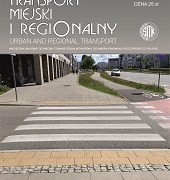
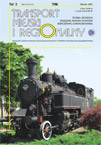 SITK RP
SITK RP 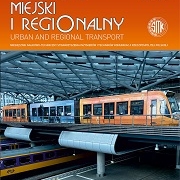
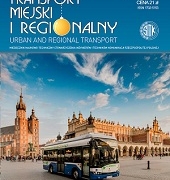
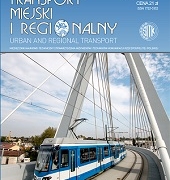
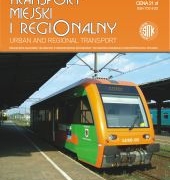 SITK RP
SITK RP 

